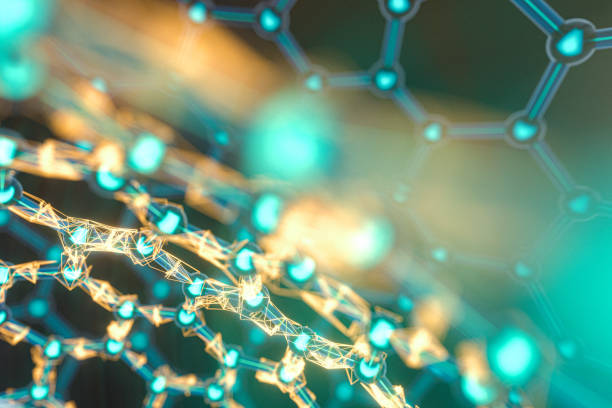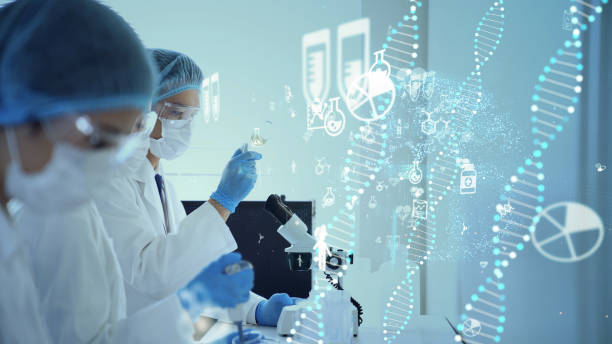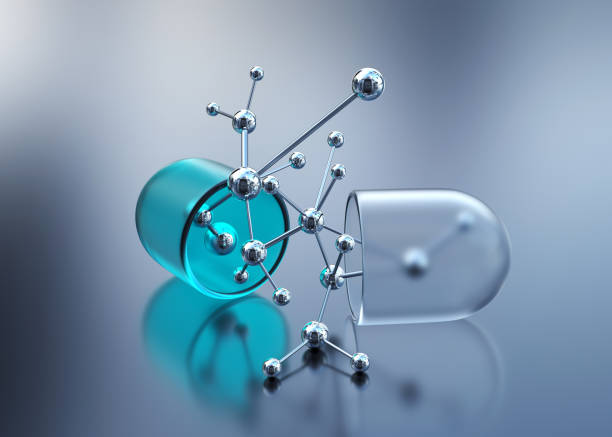Uncovering what’s in store: Nanotechnology in biology and medicine
Nanotechnology in Biology and Medicine
In the always-developing scene of biology and innovation, the marriage of nanotechnology in biology and medicine has opened new boondocks, promising earth-shattering headways that could reshape how we see and treat sickness. Nanotechnology, the control of issues at the nanoscale, has tracked down fruitful ground in biology and medicine, offering remarkable open doors for finding, treating, and grasping the human body’s complexities.
| Aspect | Description |
|---|---|
| Definition | Nanotechnology involves the manipulation of matter at the nanoscale, where materials exhibit unique properties due to their small size (1-100 nanometers). In the context of biology and medicine, it enables precise manipulation of structures and devices for various applications. |
| Applications in Drug Delivery | Nanotechnology facilitates the design of nanocarriers, such as nanoparticles, liposomes, and micelles, to encapsulate therapeutic agents. These carriers can be targeted to specific cells or tissues, enhancing drug delivery precision, minimizing side effects, and improving the efficacy of treatments. |
| Imaging and Diagnostics | Nanoscale materials like quantum dots and gold nanoparticles are utilized as contrast agents in imaging techniques. Nanotechnology also contributes to the development of biosensors for highly sensitive and specific disease diagnostics, enabling early detection and accurate monitoring of various medical conditions. |
| Cancer Treatment | Nanoparticle-based therapeutics in cancer treatment allow for the selective targeting of cancer cells. This targeted approach minimizes damage to healthy tissues, reduces side effects commonly associated with conventional therapies, and improves the overall effectiveness of cancer treatments. |
| Safety Concerns | Despite the potential benefits, safety concerns regarding the use of nanomaterials persist. The behavior of nanoparticles in biological systems, potential toxicity, and long-term effects on human health and the environment are subject to ongoing research and rigorous safety assessments. Responsible development is crucial to ensuring the safe application of nanotechnology in medicine. |
The Nanoscale Upset

Nanotechnology works at the size of nanometers, where one nanometer is identical to one billionth of a meter. At this scale, the laws of old-style physical biology start to obscure, and exceptional properties arise, considering the production of materials and gadgets with novel qualities. This capacity to design designs and frameworks at such a brief scale has prepared for advancements with significant ramifications for different logical disciplines.It is Nanotechnology in biology and medicine
Nanotechnology in Biology and Medicine
Nanoscale Imaging
One of the vital commitments of Nanotechnology in biology and medicine is in the imaging domain. Customary imaging procedures frequently face restrictions regarding goal and explicitness. Nonetheless, with the advancement of nanoscale imaging innovations, researchers can now envision cell designs and cycles with remarkable clarity. Quantum specks, for instance, are nanoscale semiconductor particles that radiate unmistakable varieties while being enlightened, empowering the profoundly unambiguous naming of cell parts.
Designated Medicine Conveyance
Nanotechnology has changed drug conveyance frameworks, giving a way to ship remedial specialists straightforwardly to the site of activity. Nanoparticles, liposomes, and micelles can be designed to epitomize drugs, shielding them from debasement and working with their delivery at the ideal area inside the body. This designated drug conveyance approach limits side effects and upgrades the viability of medicines.
Biosensors and diagnostics
Nanotechnology has additionally led to the improvement of cutting-edge biosensors for symptomatic purposes. Nanoscale materials, for example, carbon nanotubes and gold nanoparticles, can be functionalized to distinguish explicit biomolecules demonstrative of illnesses. These biosensors offer quick and exceptionally touchy symptomatic capacities, possibly changing the scene of early sickness identification.
Nanotechnology in Biology and Medicine
Nanomedicine: Treating Illnesses at the Sub-atomic Level
Nanomedicine, an interdisciplinary field that joins Nanotechnology in biology and medicine, is committed to treating different illnesses. Nanoparticles can be intended to connect with explicit cells or tissues, empowering the exact regulation of natural cycles. This degree of accuracy opens roads for customized medicine, fitting medicines to individual hereditary and atomic profiles.
Malignant growth treatment and nanoparticle therapeutics
Nanotechnology has emerged as a vital partner in malignant growth treatment. Nanoparticle-based therapeutics can specifically target disease cells, conveying helpful specialists straightforwardly to the growth while saving solid tissue. This designated approach can improve the viability of medicines while limiting the frequently crippling secondary effects related to ordinary treatments.
Regenerative Medicine and Tissue Designing
Nanotechnology in biology and medicine, aiming to fix or replace damaged tissues and organs. Nanomaterials can make platforms that imitate the regular extracellular network, giving cell development and tissue recovery a steady climate. This approach is incredibly committed to improving practical tissues and organs for transplantation.
Neurological problems and nanodevices
The use of nanotechnology in nervous system biology is incredibly captivating. Nanodevices can be intended to collaborate with the unpredictable designs of the sensory system, offering additional opportunities for treating neurological problems. From designated drug conveyance to the tweak of brain circuits, nanotechnology holds the possibility of addressing difficulties that have long baffled the area of nervous system biology.
Challenges and Moral Contemplations
Well-being and poisonousness
Regardless of the exceptional capability of Nanotechnology in biology and medicine, worries about the security and harmfulness of nanomaterials persist. The way nanoparticles behave in organic frameworks still needs to be completely figured out, bringing up issues about their drawn-out influence on human well-being and the climate. Thorough well-being appraisals and continuous examination are crucial for addressing these worries and guaranteeing the mindful improvement of nanotechnological applications.
Moral Ramifications of Human Upgrade
The convergence of nanotechnology with medicine brings up moral issues connected with human improvement. As advances arise that could upgrade mental capability and actual capacities or even broaden human life expectancy, society faces complex ethical problems. Adjusting the possible advantages of these innovations with the moral contemplations of changing critical parts of human instinct requires cautious reflection and continuous exchange.
Future Viewpoints
As we stand on the cusp of another period in medicine and biology, the reconciliation of nanotechnology holds the commitment of groundbreaking headways. The potential applications are enormous and shifting from customized therapy to regenerative treatments. Understanding this potential requires cooperative endeavours across disciplines, tending to somewhere safe, and exploring the moral components of nanotechnology.
Final words about nanotechnology in biology and medicine
Nanotechnology’s intermingling with biology and medicine addresses the outskirts of logical investigation with the ability to rethink medical services and our comprehension of the human body. From nanoscale imaging and designated drug conveyance to the blossoming field of nanomedicine, the conceivable outcomes are immense and invigorating. Be that as it may, likewise with any groundbreaking innovation, moral contemplations and security concerns should be tended to pair with logical advancement. As scientists keep opening the secrets of the nanoscale world, what’s in store holds the commitment of additional compelling medicines, customized medicine, and a more profound comprehension of the complicated components that oversee life.

FAQs about Nanotechnology in Biology and Medicine
What is nanotechnology, and how can it meet biology and medicine?
Nanotechnology includes controlling issues at the nanoscale, where materials display exciting properties. About biology and medicine, nanotechnology empowers the making of designs and gadgets with applications ranging from imaging cell designs to designated drug conveyance. This crossing point opens new roads for creative arrangements in diagnostics, therapeutics, and our comprehension of natural cycles at the sub-atomic level.
How does nanotechnology contribute to more exact and designated drug conveyance?
Nanotechnology permits the creation of nanoparticles, liposomes, and micelles that can embody helpful specialists. These nanocarriers can target explicit cells or tissues, conveying drugs straightforwardly to the activity site. This designated drug conveyance limits secondary effects related to conventional medicines, upgrades helpful viability, and addresses a critical headway in customized treatment.
Which job does nanotechnology play in imaging and diagnostics in medicine?
Nanotechnology has changed imaging and diagnostics presenting nanoscale materials with extraordinary properties. Quantum spots, gold nanoparticles, and other nanomaterials can be utilized different specialists in different imaging procedures. These specialists offer higher goals and explicitness, empowering more precise analysis. Moreover, nanoscale biosensors can recognize explicit biomolecules, working with fast and touchy illness locations.
How is nanotechnology applied in the therapy of malignant growth?
Nanotechnology assumes a significant role in disease treatment improving nanoparticle-based therapeutics. These nanoparticles can target disease cells, conveying remedial specialists straightforwardly to the growth specifically. This designated approach upgrades the viability of therapy while limiting harm to sound tissues, diminishing aftereffects, and possibly working on the general personal satisfaction of malignant growth patients.
What are the essential security concerns related to nanotechnology in medicine?
While nanotechnology holds extraordinary promise, well-being concerns concerning the utilization of nanomaterials in medicine endure. Questions encompass how nanoparticles behave in organic frameworks, their possible harmfulness, and their long-term impacts on human well-being and the climate. Tending to these worries requires thorough security evaluations, progressing research, and a promise of dependable improvement to guarantee that the advantages of nanotechnology are acknowledged without compromising well-being.

